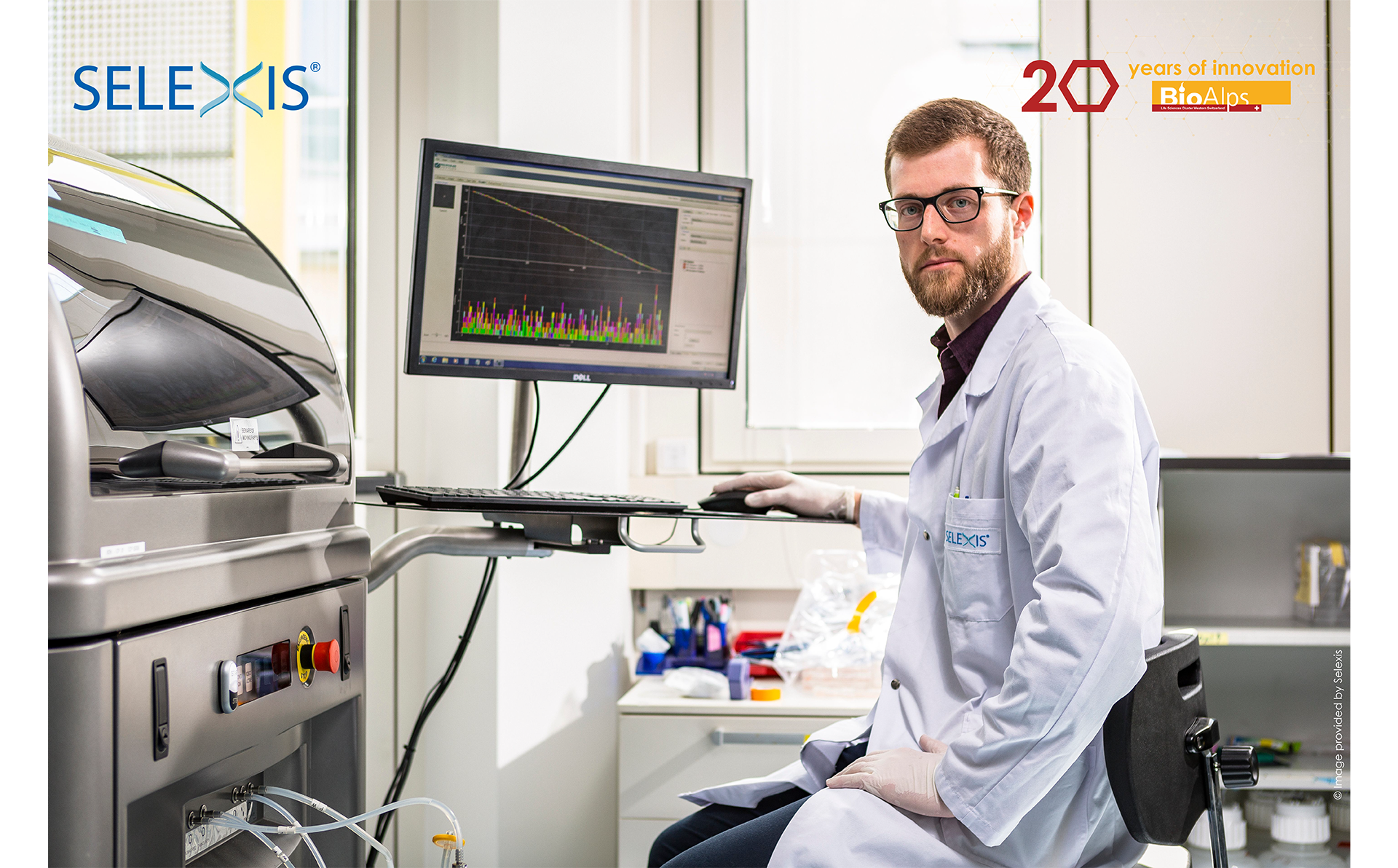
BioAlps | 20 years of innovation | Selexis
Share this article
Selexis | Cell line development meets lab automation and robotics for biologic therapeutic manufacturing
We are pleased to share with you our new testimonial series as part of our ecosystem’s 20th anniversary celebrations. The series aims to provide a platform for regional Life Sciences key players to present themselves, share their perspectives on the development of Western Switzerland’s Life Sciences ecosystem and their outlook on upcoming challenges and opportunities. The following article is presented to you by Selexis.
Presentation of Selexis’ activities
Selexis has innovative, proprietary technologies that significantly reduce the time, effort, and costs of developing mammalian cell lines for biologic therapeutic manufacturing. With its reputation for quality, predictability, and scientific excellence, Selexis has helped biopharmaceutical companies worldwide get critical therapeutics into the clinic and marketplace for the last 20+ years.
Major Life Sciences trends and developments in Western Switzerland and Selexis’ contribution
In the more than three decades since the first monoclonal antibody approval, biologics therapeutics have become increasingly sophisticated and address complex diseases with efficacy and safety profiles previously unattainable. Bi-specific and tri-specific protein therapeutics are showing remarkable results in the clinic. These synthetic and highly developed classes of biologics can be challenging to produce using standard mammalian expression systems. Selexis recognised this early on and committed significant resources to ensure their SUREtechnology Platform™ and proprietary SURE CHO-M™ cell line could meet these expression challenges. As a result, Selexis is a recognised leader in addressing difficult-to-express proteins. The Company’s commitment to helping partners develop life-saving medicines faster, safe, and cost efficient helped drive the Selexis’ growth in the Geneva area, including its current expansion which offers one-stop-shop manufacturing (cell line development to bulk drug substance) via KBI Biopharma, a JSR Life Sciences Company.
Significant foreseeable trends and challenges in Life Sciences
In addition to increasingly sophisticated biologics, another exciting trend for Life Sciences organisations and cell line development is the implementation and use of automation and robotics. Liquid handling and imaging technologies have become so advanced, it is possible to rapidly pick out production cell line clones, even rare ones, rapidly with a high degree of accuracy. This has significantly reduced development timelines for straight-forward, easy to express proteins, and the more difficult-to-express, complicated biologic therapeutics; thereby shortening the timeline to clinic. By combining automation with the SUREtechnology Platform™, Selexis can give its partners a first-in-human advantage.
A trend that could impact biologic therapeutic development in the long term is work to develop messenger RNA (mRNA) drugs as an alternative to protein therapeutics. In this case, instead of receiving a therapeutic protein, a patient would receive a dose of therapeutic mRNA containing the protein sequence of interest, and the patient’s own body would become the bioreactor making the therapeutic protein. While this approach promises to maintain steady therapeutic levels for patients, it is still very early in development and unlikely to entirely displace protein therapies. Traditional biologics development allows for the optimisation of complex, sophisticated therapeutics (and vaccines) in a controlled environment. Further, protein therapies are easier to dose regulate, stop treatment if safety issues arise, and attach warheads or other disease modifying molecules.
Major events which have contributed to the development of Life Sciences
One of the biggest drivers for the whole Life Sciences industry since 2000 has been the sequencing of human and other genomes. That data has provided the blueprint for understanding cells and changes associated with disease, which in turn has accelerated the pace of therapeutics research and the development of new biotech companies. Life sciences in Western Switzerland has benefitted from having a rich pool of talent and scientists from local universities motivated to take these discoveries and develop them into products that help patients. As a successful example, Selexis, was spun out of the University of Lausanne. Finally, investment and funding structures have been developed and set in place to encourage and support biotech companies to succeed.
Selexis’ contribution to improve “health accessibility to all”
There are numerous ways to improve “health accessibility to all”, including generating more affordable treatment options. Selexis works with partners across the globe, facilitating the development of biosimilars, which are lower-priced options to approved protein therapeutics. Biosimilars must demonstrate structural equivalence to the original, innovator drugs, making biosimilar production challenging because production variability within and across manufacturing cell lines can be high. The cell line platform used to generate the biosimilar must be robust and tunable to achieve the similar specifications to the innovator drugs. Selexis has a track record of enabling biosimilar companies to develop and secure regulatory approval of biosimilars.
Selexis’ recommendations
The COVID-19 pandemic has demonstrated it is possible to significantly shorten clinical development timelines and get to market without sacrificing product safety and efficacy. In addition to the remarkable timelines achieved in developing COVID-19 vaccines, therapeutic development continued unabated over the last 1.5 years as a result of improved collaborations between developers, CDMOs, Life Sciences companies, hospitals and global regulatory agencies. The industry should take the lessons learned from improved collaborative structures, streamlined regulatory processes, virtual clinical trial monitoring, etc., and apply these processes going forward.